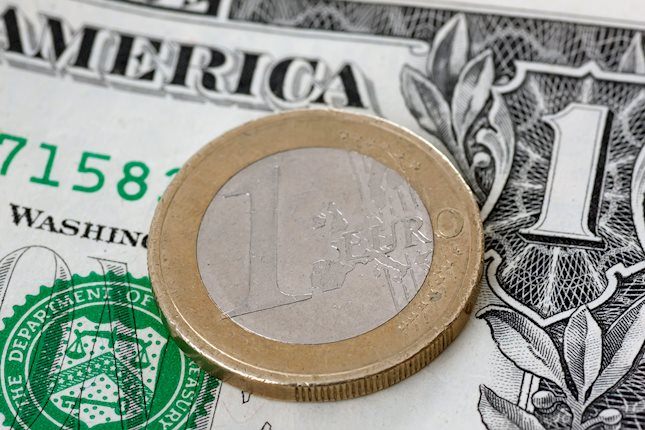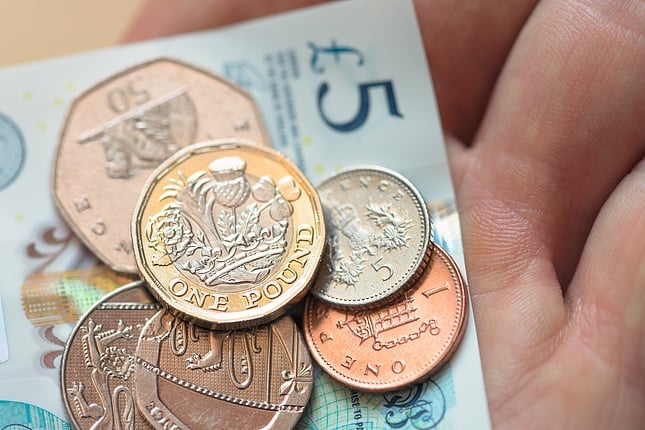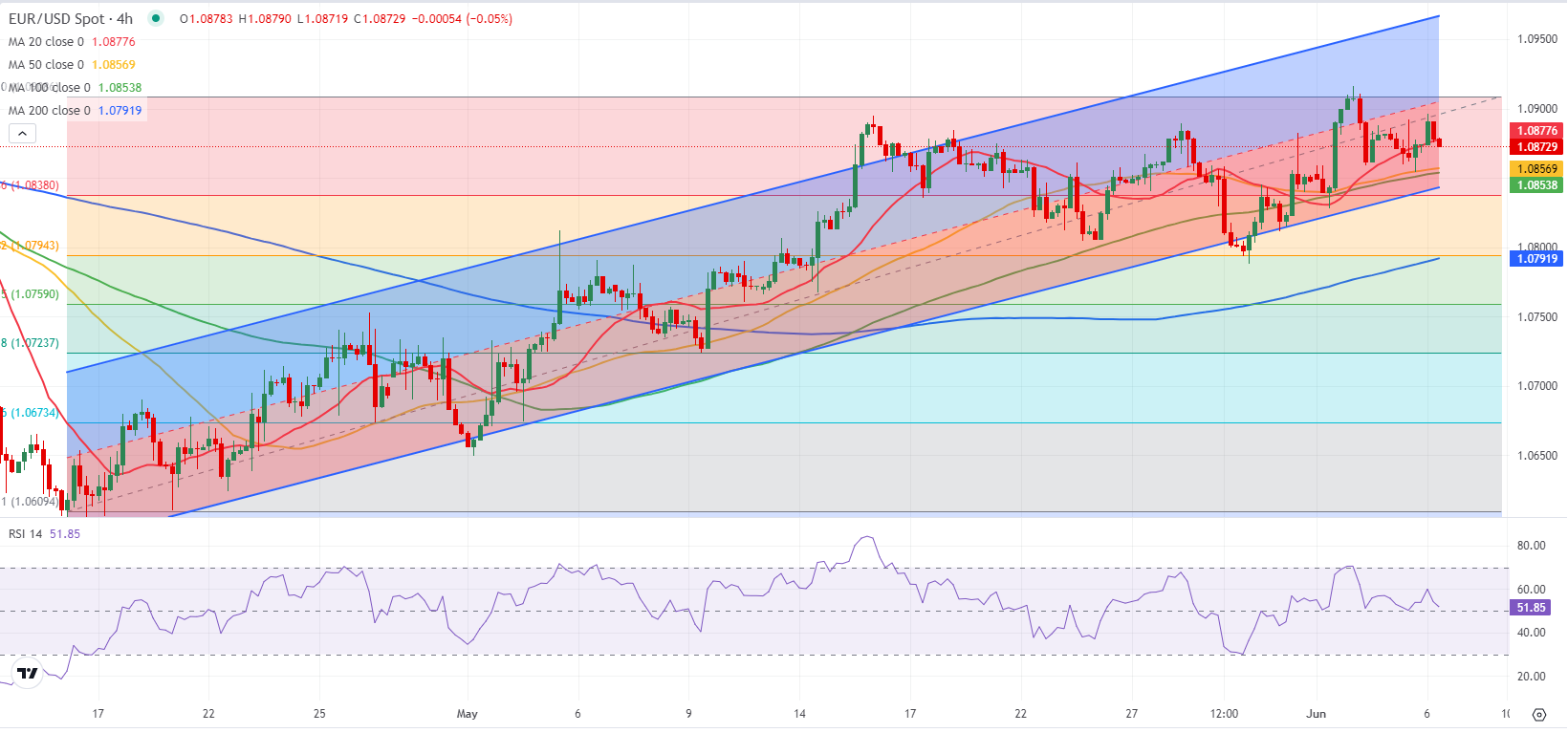- EUR/USD continues to move sideways below 1.0900 early Thursday.
- The ECB is widely expected to lower key rates by 25 bps.
- ECB President Lagarde's comments on policy outlook could drive the pair's action.
EUR/USD registered small losses on Wednesday but managed to hold comfortably above 1.0850. The pair fluctuates in a narrow channel below 1.0900 as investors await the European Central Bank's (ECB) monetary policy announcements.
Euro PRICE This week
The table below shows the percentage change of Euro (EUR) against listed major currencies this week. Euro was the weakest against the Swiss Franc.
| USD | EUR | GBP | JPY | CAD | AUD | NZD | CHF | |
|---|---|---|---|---|---|---|---|---|
| USD | -0.25% | -0.33% | -0.56% | 0.43% | 0.09% | -0.74% | -1.18% | |
| EUR | 0.25% | -0.06% | -0.31% | 0.68% | 0.22% | -0.49% | -0.94% | |
| GBP | 0.33% | 0.06% | -0.20% | 0.73% | 0.34% | -0.49% | -0.89% | |
| JPY | 0.56% | 0.31% | 0.20% | 0.96% | 0.71% | -0.03% | -0.45% | |
| CAD | -0.43% | -0.68% | -0.73% | -0.96% | -0.35% | -1.16% | -1.61% | |
| AUD | -0.09% | -0.22% | -0.34% | -0.71% | 0.35% | -0.72% | -1.18% | |
| NZD | 0.74% | 0.49% | 0.49% | 0.03% | 1.16% | 0.72% | -0.49% | |
| CHF | 1.18% | 0.94% | 0.89% | 0.45% | 1.61% | 1.18% | 0.49% |
The heat map shows percentage changes of major currencies against each other. The base currency is picked from the left column, while the quote currency is picked from the top row. For example, if you pick the Euro from the left column and move along the horizontal line to the US Dollar, the percentage change displayed in the box will represent EUR (base)/USD (quote).
The ECB is widely expected to cut key interest rates by 25 bps following the June policy meeting. Since numerous ECB policymakers clearly communicated that they were intending to lower key rates in June, this decision by itself might not trigger a noticeable market reaction. Hence, investors will pay close attention to changes in the statement language and comments from President Christine Lagarde in the post-meeting press conference.
European Central Bank set to cut interest rates for first time since 2019.
In case Lagarde adopts an optimistic tone about the inflation outlook and leaves the door open to additional rate reductions in the upcoming meetings, the initial reaction could trigger a Euro selloff and cause EUR/USD to turn south.
On the other hand, the Euro could gather strength if Lagarde reiterates the data-dependent approach and refrains from committing to further policy easing later in the year.
The US economic docket will feature weekly Initial Jobless Claims data in the second half of the day. Ahead of Friday's May jobs report, investors are unlikely to react to this data.
EUR/USD Technical Analysis
EUR/USD trades in the lower half of the ascending regression channel and the Relative Strength Index (RSI) indicator on the 4-hour chart stays near 50, reflecting the pair's indecisiveness.
1.0850-1.0840 (100-period Simple Moving Average (SMA), lower limit of the ascending channel) aligns as first support before 1.0800-1.0790 (psychological level, static level, 200-period SMA) and 1.0760 (static level). On the upside, resistances could be seen at 1.0900 (mid-point of the ascending channel, static level), 1.0950 (static level) and 1.0970 (upper limit of the ascending channel).
ECB FAQs
The European Central Bank (ECB) in Frankfurt, Germany, is the reserve bank for the Eurozone. The ECB sets interest rates and manages monetary policy for the region. The ECB primary mandate is to maintain price stability, which means keeping inflation at around 2%. Its primary tool for achieving this is by raising or lowering interest rates. Relatively high interest rates will usually result in a stronger Euro and vice versa. The ECB Governing Council makes monetary policy decisions at meetings held eight times a year. Decisions are made by heads of the Eurozone national banks and six permanent members, including the President of the ECB, Christine Lagarde.
In extreme situations, the European Central Bank can enact a policy tool called Quantitative Easing. QE is the process by which the ECB prints Euros and uses them to buy assets – usually government or corporate bonds – from banks and other financial institutions. QE usually results in a weaker Euro. QE is a last resort when simply lowering interest rates is unlikely to achieve the objective of price stability. The ECB used it during the Great Financial Crisis in 2009-11, in 2015 when inflation remained stubbornly low, as well as during the covid pandemic.
Quantitative tightening (QT) is the reverse of QE. It is undertaken after QE when an economic recovery is underway and inflation starts rising. Whilst in QE the European Central Bank (ECB) purchases government and corporate bonds from financial institutions to provide them with liquidity, in QT the ECB stops buying more bonds, and stops reinvesting the principal maturing on the bonds it already holds. It is usually positive (or bullish) for the Euro.
(This story was corrected on June 6 at 09:08 GMT so say that the 1.0950 is a static level, not the upper limit of the ascending channel).
Information on these pages contains forward-looking statements that involve risks and uncertainties. Markets and instruments profiled on this page are for informational purposes only and should not in any way come across as a recommendation to buy or sell in these assets. You should do your own thorough research before making any investment decisions. FXStreet does not in any way guarantee that this information is free from mistakes, errors, or material misstatements. It also does not guarantee that this information is of a timely nature. Investing in Open Markets involves a great deal of risk, including the loss of all or a portion of your investment, as well as emotional distress. All risks, losses and costs associated with investing, including total loss of principal, are your responsibility. The views and opinions expressed in this article are those of the authors and do not necessarily reflect the official policy or position of FXStreet nor its advertisers. The author will not be held responsible for information that is found at the end of links posted on this page.
If not otherwise explicitly mentioned in the body of the article, at the time of writing, the author has no position in any stock mentioned in this article and no business relationship with any company mentioned. The author has not received compensation for writing this article, other than from FXStreet.
FXStreet and the author do not provide personalized recommendations. The author makes no representations as to the accuracy, completeness, or suitability of this information. FXStreet and the author will not be liable for any errors, omissions or any losses, injuries or damages arising from this information and its display or use. Errors and omissions excepted.
The author and FXStreet are not registered investment advisors and nothing in this article is intended to be investment advice.
Recommended Content
Editors’ Picks

EUR/USD recovers toward 1.0600 as US Dollar retreats ahead of data
EUR/USD extends the rebound toward 1.0600 in the European session on Friday. The renewed upside is mainly linked to a broad US Dollar pullback as traders look to the topt-tier US Retail Sales data for a fresh impetus. ECB- and Fedspeak also eyed.

GBP/USD holds above 1.2650 after UK data
GBP/USD holds its recovery momentum above 1.2650 in European trading on Friday. The mixed UK GDP and industrial data fail to deter Pound Sterling buyers as the US Dollar rally takes a breather ahead of Retail Sales and Fedspeak.

Gold stabilizes after bouncing off 100-day moving average
Gold trades little changed on Friday, holding steady in the $2,560s after making a slight recovery from the two-month lows reached on the previous day. A stronger US Dollar continues to put pressure on Gold since it is mainly priced and traded in the US currency.

Bitcoin to 100k or pullback to 78k?
Bitcoin and Ethereum showed a modest recovery on Friday following Thursday's downturn, yet momentum indicators suggest continuing the decline as signs of bull exhaustion emerge. Ripple is approaching a key resistance level, with a potential rejection likely leading to a decline ahead.

Trump vs CPI
US CPI for October was exactly in line with expectations. The headline rate of CPI rose to 2.6% YoY from 2.4% YoY in September. The core rate remained steady at 3.3%. The detail of the report shows that the shelter index rose by 0.4% on the month, which accounted for 50% of the increase in all items on a monthly basis.

Best Forex Brokers with Low Spreads
VERIFIED Low spreads are crucial for reducing trading costs. Explore top Forex brokers offering competitive spreads and high leverage. Compare options for EUR/USD, GBP/USD, USD/JPY, and Gold.
